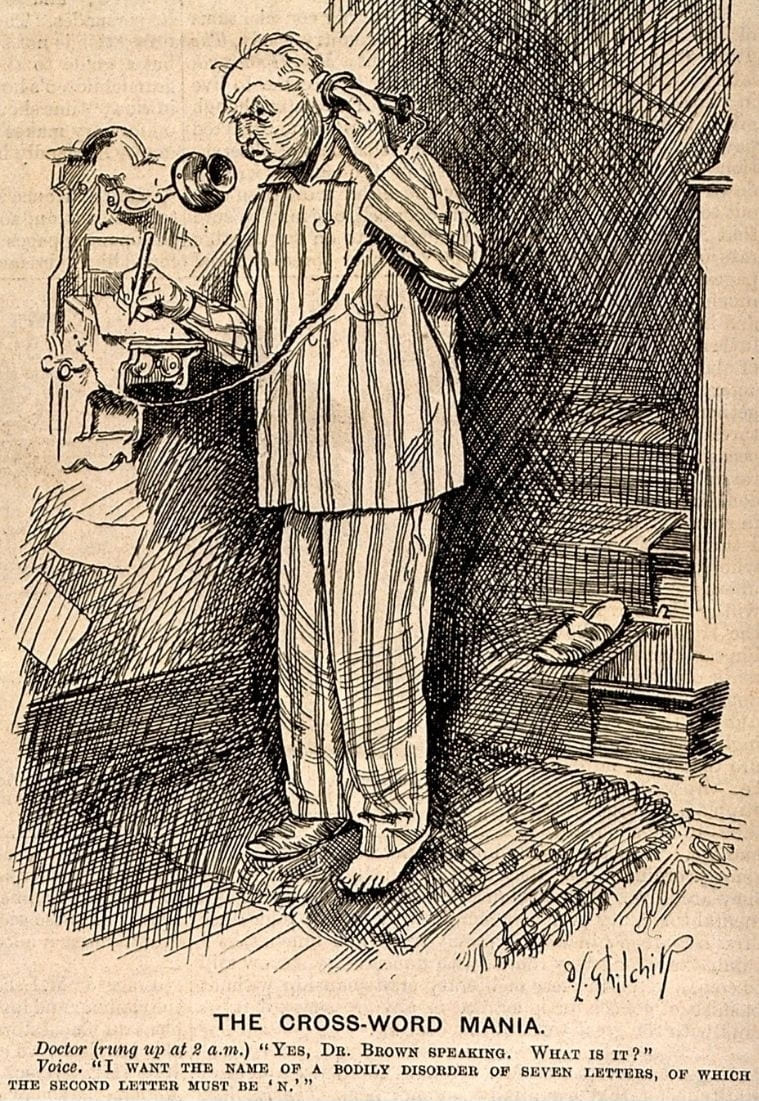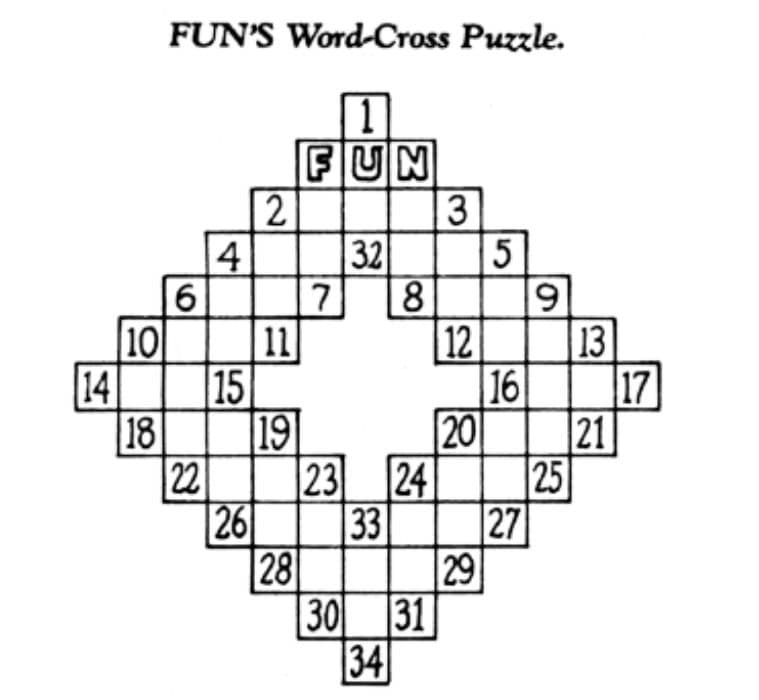© IE Online Media Services Pvt Ltd
Latest Comment
Post Comment
Read Comments
 We've recreated the historic grid from 1913 so that you can play it online. Source image (right): Fortepan/Wikimedia Commons
We've recreated the historic grid from 1913 so that you can play it online. Source image (right): Fortepan/Wikimedia CommonsScroll to the end to start playing! This story is part of Express Puzzles & Games, where we do daily crosswords, sudoku and weekly trivia quizzes. Sign up to explore our hub.
At the beginning of 2022, Wordle exploded. Scores flooded social media, a hundred spinoffs launched every week, and news sites rushed to share daily clues for solvers. But this isn’t the first time a word game has taken the world by storm.
In the early 1900s, a different ‘mania’ gripped the public — crossword mania. Yep, that black-and-white grid that’s seldom finished today was the central, glamorous hobby for millions in the Anglosphere. This craze manifested in crossword-themed clothing, parties, wedding announcements, aid dictionaries in trains, and even distracted athletes in locker rooms.
 1925 cartoon showing a crossword fanatic, who calls his doctor at 2am to solve a clue. Source: Wellcome Images/Wikimedia Commons.
1925 cartoon showing a crossword fanatic, who calls his doctor at 2am to solve a clue. Source: Wellcome Images/Wikimedia Commons.
But where did it all begin?
The first published (and thus, known) crossword was made by Arthur Wynne, an editor at American newspaper New York World. Wynne ran a Sunday supplement called FUN, and was looking for something to fill the pages for December 21, 1913. Inspired by word puzzles from his native England (Wynne was a migrant from Liverpool), he created and ran a diamond-shaped puzzle in the paper. Wynne called it a ‘word-cross’, with a list of clues for 32 mystery words:
 The world’s first crossword puzzle, published in ‘New York World’ in 1913. Source: Public domain/Wikimedia Commons
The world’s first crossword puzzle, published in ‘New York World’ in 1913. Source: Public domain/Wikimedia Commons
This ‘word-cross’ was meant to be a one-time game, since it was labour-intensive to create and print in 1913. But FUN’s readers were hooked, and demanded a new ‘word-cross’ every weekend — Americans hadn’t seen it before, so it was a fascinating new hobby. The name was later changed to ‘cross-word’ due to a typesetting mistake, and voila: the modern crossword puzzle was born.
As more papers in the US and UK picked it up, the crossword morphed into the criss-cross grid we know today. Things truly exploded in 1924, when the then-fledgling publishing house Simon & Schuster published the first crossword book, which came with an attached pencil. The book was a hit, and cemented Simon & Schuster’s place in the industry.
Today, many might know The New York Times as the holy grail for crosswords. But interestingly, the Times refused to carry crosswords for a long time, once even publishing a column calling it a ‘sinful waste of time’. But when Pearl Harbour happened, the paper changed its mind. It noted that readers needed a source of comfort in a worrying era, where they spent long hours at home, akin to Wordle’s popularity during the COVID-19 pandemic.
December 21, the day Wynne published his first puzzle, is now celebrated as National Crossword Day. His original grid is solvable even today, showing how a well-made puzzle stays evergreen. It has a few archaic words in there that might stump you, but give it a try anyway. How often do you get to relive something from 1913?
Link to the answer key for Arthur Wynne’s crossword.
History Crossword | On India’s Freedom Movement
Movie Crossword | Spotlight on Cinema: An Ode to the Silver Screen
Celebrity Crossword | 80 Years of Amitabh Bachchan
For more puzzles, event alerts and bite-sized brainy fun, follow @iepuzzles on Instagram.

